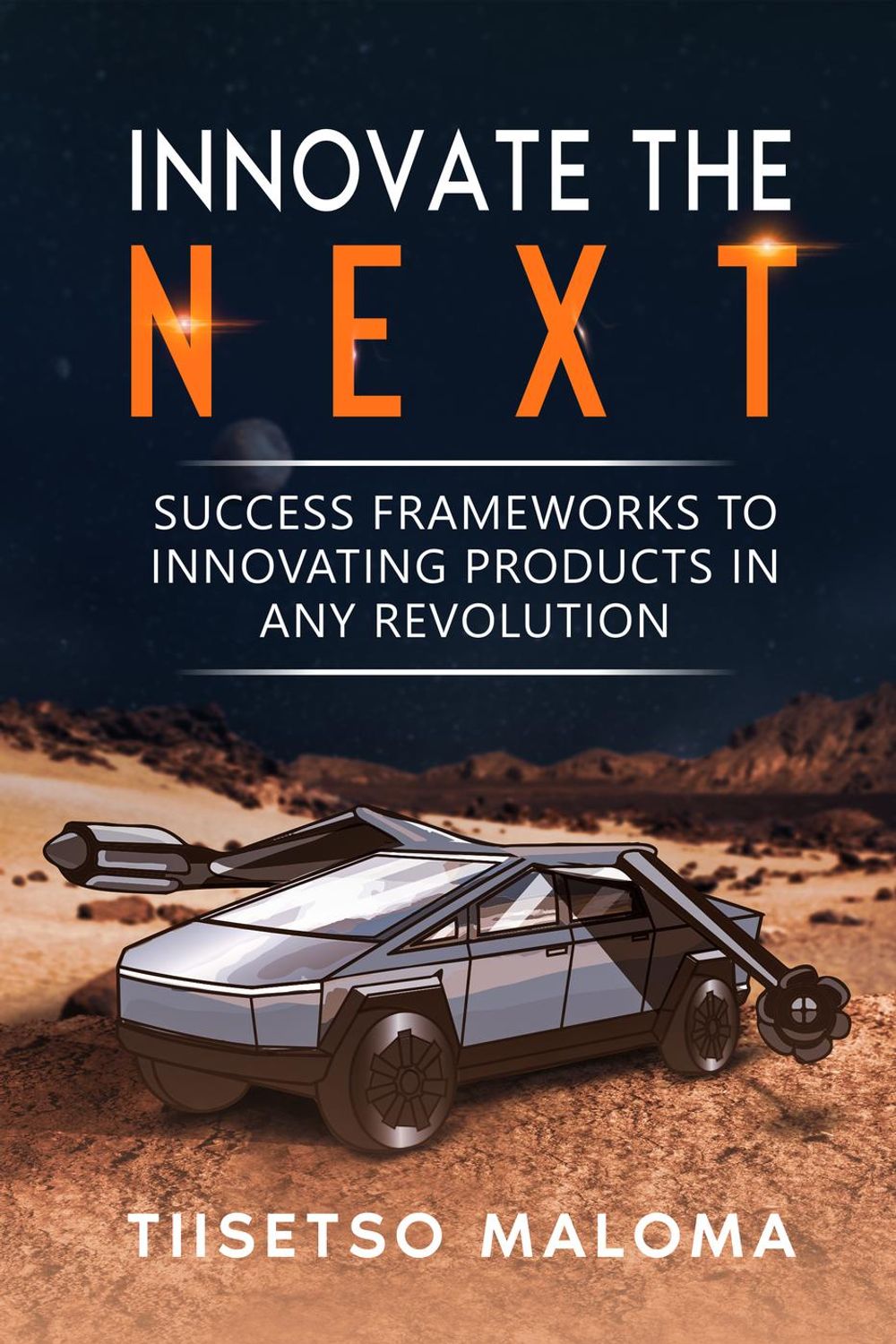Innovate The Next: Success Frameworks to Innovating Products in Any Revolution
Innovate The Next is the 7th book by author and entrepreneur Tiisetso Maloma. The core teaching of the book is how one can become an innovator of novel products (physical and virtual) in any industrial revolution. It is targeted at entrepreneurs, employees and innovation enthusiasts. To understand and master a thing, one has to understand how it forms, unfolds and evolves. Chapter One takes to evolutionary biology to form this understanding of innovation evolution (manmade and biological). After all, biology gave humans the brain they innovate with. It looks at the factors pre-determining the success or failure of biological and manmade innovations. To achieve this it borrows the 'Adjacent Possible Theory' from biology. The theory was devised by theoretical biologist Stuart Alan Kauffman. To drive this guide methodically, Tiisetso Maloma devised a set of factors entitled 'Enabling factors for products success with the Adjacent Possible.' Namely, they are: (a) Behavioural Utility, (b) Innovation (adjacent possible stacking, or stacking for agility), (c) Location Specific Adjacent Possible Advantages, (d) Spaza/Convenience Metrical Interest/Advantage of a Product, (e) Business Model, and (f) Luck. Their use is to analyse, evaluate and strengthen any product innovation or idea. Chapter Two connects the success or failure of manmade innovations to evolutionary psychological-inclinations through Tiisetso Maloma's devised Human Greed Pyramid. The pyramid illustrates how product success is allowed and or disallowed by human inclinations. Chapter Three plots how inclinations can be plotted into innovation. Chapter Four reverse engineers the models illustrated in the book into what skills can one hone to become an innovator of novel products. It draws scenarios for entrepreneurs, employees and innovation aspirants. Chapter Five connects the models learned throughout the book to understand the current (Fourth) Industrial Revolution and its technologies: robotics, artificial intelligence, nanotechnology, quantum computing, biotechnology, the Internet of Things, decentralized consensus, 5G, 3D printing and autonomous vehicles. It sheds light on key innovation concepts such as Moore's Law, exaptation, and convergence. It is a chapter on how to see into the future as an innovator.
-
Autore:
-
Anno edizione:2024
-
Editore:
-
Formato:
-
Lingua:Inglese
Formato:
Gli eBook venduti da Feltrinelli.it sono in formato ePub e possono essere protetti da Adobe DRM. In caso di download di un file protetto da DRM si otterrà un file in formato .acs, (Adobe Content Server Message), che dovrà essere aperto tramite Adobe Digital Editions e autorizzato tramite un account Adobe, prima di poter essere letto su pc o trasferito su dispositivi compatibili.
Cloud:
Gli eBook venduti da Feltrinelli.it sono sincronizzati automaticamente su tutti i client di lettura Kobo successivamente all’acquisto. Grazie al Cloud Kobo i progressi di lettura, le note, le evidenziazioni vengono salvati e sincronizzati automaticamente su tutti i dispositivi e le APP di lettura Kobo utilizzati per la lettura.
Clicca qui per sapere come scaricare gli ebook utilizzando un pc con sistema operativo Windows



